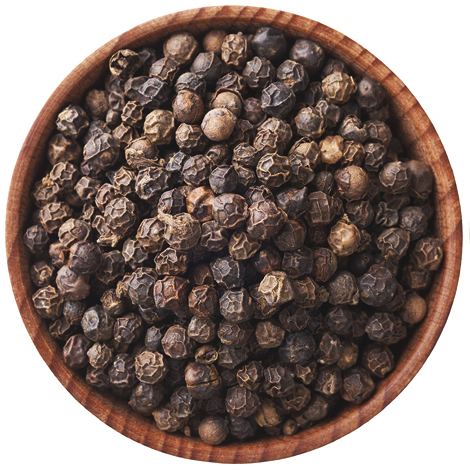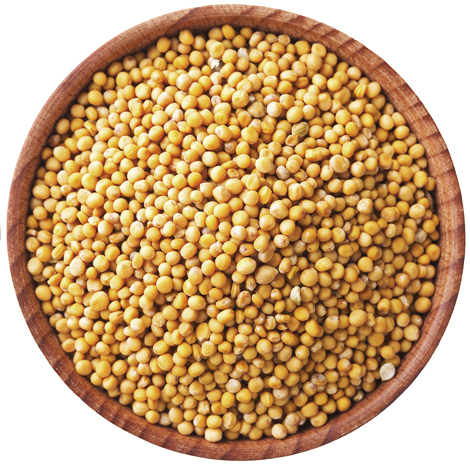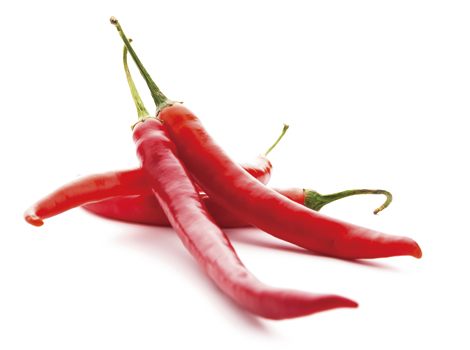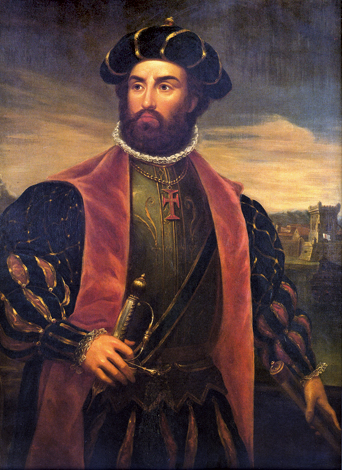
Centuries of immigration and trade have taken spices to kitchens in all four corners of the globe in an epic story replete with wars, empire building and adventure.
Valued for their additions to flavour, colour and aroma, spices have had many other uses such as to preserve food, as a currency substitute, and prized for their alleged medicinal properties.
Black pepper
Known as black gold, pepper has been grown and used in India since at least 2000 BC. Almost all of the black pepper used in Europe, the Middle East, and North Africa was sourced from India’s Malabar region before trade routes were established and other producers emerged in Southeast Asia. Vietnam is now the world’s biggest producer of black pepper with contemporaries in Cambodia, Indonesia and Malaysia.

During the Roman Empire, pepper was regularly used as currency. As a member of the vine family, black pepper was also valued as a stimulant, and demand for it spurred European adventurers to open up new trade routes in the 15th century to the regions where it was produced.
As supplies grew, it became a common condiment, finding its way into the kitchens of the less well-to-do.
Try black pepper and strawberry ice cream, or chef David Lebovitz’s milk chocolate and black pepper ice cream (davidlebovitz.com), for a new take on a store cupboard workhorse.
Cardamom
Green cardamom is grown in warm, humid climates. The Vikings first encountered this aromatic spice in the markets of Istanbul as they pillaged their way across Europe. They took it back with them to Scandinavia where it was subsequently incorporated in many bread, biscuit and dessert recipes.
Used to freshen breath, aid digestion and clear infections, cardamom is commonly found in sweets, and to a lesser extent savoury dishes to add flavour and aroma.
For an interesting combination, try pickled herring flavoured with cardamom.
Nutmeg
The seed of a tree that is native to a small group of Indonesian islands. The demand for this rare spice played a role in the Second Anglo-Dutch War (1665-1667) where the English and Dutch wrestled for control of trade routes.
It is thought that Nutmeg was brought to Europe in the Middle Ages by the Venetians, who bought it from Arab traders. Now, nutmeg grows in Australasia and tropical regions of Southeast Asia. Indonesia and Grenada are the principal producers today.

A versatile spice with a warm, spicy aroma and flavour, nutmeg can be used in sweet and savoury dishes. It has also popularly been used as an aphrodisiac. Indian scriptures recommend nutmeg for headaches, colds, stomachache, fever, and bad breath although when ingested in high doses it can be toxic.
Grate over cheese to add depth.
Cumin
Popular for its medicinal uses, cumin, the seed of a flowering plant, was used abundantly by the ancient Egyptians, the Greeks and the Romans. Originally from Iran and the Mediterranean region, it is associated mostly with Persian, Indian, Mexican, and Vietnamese cuisines.
In popular culture, the spice was said to promote love and loyalty, and was used during wedding ceremonies. Today, it is widely cultivated in places such as China, Malta, India, Sicily, Iran, Saudi Arabia and Mexico. Mainly known as a curry spice, it adds oomph to roasted roots, such as parsnip.
Try it in Hugh Fearnley-Whittingstall’s cheese soup for a hearty concoction with a kick (bbc.co.uk/food).
Cinnamon
Often referred to as one of the most sensuous spices and used as an aphrodisiac, cinnamon has an exotic fragrance and taste. It is made from the bark of a tree that grows abundantly in Sri Lanka. One of its more macabre uses was to add fragrance during the embalming process and as an ingredient in anointing oil. Unhinged Roman emperor Nero supposedly used bundles of it in his second wife’s funeral pyre.
Arab traders are thought to have introduced it to Europe, where its source was kept a mystery in the Middle Ages. Like many spices, cinnamon was a status symbol, a luxury preserved for the very wealthy.

Nowadays, ground cinnamon is commonly used to add flavour to baked goods, such as buns, cakes, sweet pastries and puddings. Cinnamon bark is used in the poaching of fruits such as pears and plums, and to add flavour to mulled wine and meat.
Try the pork belly with crispy crackling skin with cinnamon, star anise and grapefruit at Bali’s Mozaic Restaurant Gastronomique for a modern twist on this noble spice (mozaic-bali.com).
Cloves
The flower buds of a tree native to the Maluku Islands in Indonesia, cloves are used widely in Chinese and Indian cooking. As with many other spices, Arab traders are believed to have introduced this one to Europe. The Dutch monopolised the cloves trade until the late 1700s, when it is said a Frenchman stole a tree and took it to France and Zanzibar to establish a rival production centre.
Try cloves in British chef Delia Smith’s braised red cabbage with apples recipe for a festive treat any time of year (deliaonline.com).
Mustard seeds
Mustard seeds are cited as a medicine in Indian scriptures as well as Greek and Roman writing, and are in fact an excellent source of the essential mineral selenium. In ancient civilisations, mustard was also used widely to flavour meat and fish dishes. In some parts of Europe it was believed that scattering mustard seeds around the house helped to ward off evil spirits.

The pungency of mustard is released only after the seeds are ground and water is added to form a paste.
Try pickled mustard seeds in chef David Chang lauded bossam, or slow-roasted pork shoulder, at Momofuku (momofuku.com).
Turmeric
In Indian cuisine, turmeric is held in as much importance as salt. This bright spice, native to southwest India, comes from the rhizome of a plant in the ginger family and is usually sold dried and ground in powder form. In India it is used as a remedy for cuts and bruises, and often added to warm milk to cure coughs and colds.
Science is beginning to shine a light on turmeric’s medicinal properties, which has found the spice contains curcuminoids that possess anti-oxidant and anti-inflammatory properties.
Apart from Indian cuisine, the spice is popular in South Asian and Middle Eastern kitchens.
Toss the spice with roasted vegetables or add to scrambled eggs or a smoothie for a healthy and colourful addition to your diet.
Chilli pepper
It is thought Columbus confused the chilli pepper with the black pepper he had hoped to find in India, and it was the Portuguese who first spread the pungent spice globally from its home in South America 500 years ago. They went on to cultivate it across the world. Today chilli peppers play an integral role in many global cuisines especially Thai and Indian cuisines.

Try in a mango and chilli ice pop for an adult take on a childhood favourite.
NEW CHAPTER
The inspiration of explorers, the spark of trade wars and the impetus for establishing empires like the Dutch East Indies, the story of spices drips with blood, sweat and tears.
Today, however, those tears are more likely to be shed for joy at the taste of a sublime dish.
Chefs are writing a new chapter in the history of spices, blending the quirks and surprises of nouvelle cuisine with time-honoured herb mixes, rubs and marinades.
At Indique in Washington D.C., co-owner and chef K.N. Vinod deploys tamarind and cumin in margaritas, and cardamom and coconut in martinis. “There is much more awareness of Indian spices in the US today compared to when I first arrived here 30 years ago”, he said.
Marriott Chakan executive chef Girish Kumar points to dishes like spiced chocolates, star anise chocolate mousse and black pepper panna cotta with balsamic strawberries as examples of innovations in the use of spices.
“Looking at the depth of our subconscious food habits and history, spices have had a huge impact on our palates and shaped the way we experience a dish,” said renowned chef Manish Mehrotra, who heads the kitchens at Indian Accent in New Delhi, and Oriental Octopus in New Delhi and Lavasa.
“We tune each spice differently according to its individuality, subtleness, depth and intensity of dishes prospering in today’s cuisines, and those yet to come. Their importance will only increase,” he added.
Vinod said his past three decades in the US had been a fascinating journey sharing his stories of growing up with spices and how his mother and grandmother used them as medicine in addition to cooking.
With modern cuisine mixing with time-honoured traditions, the spice story is set to continue.
Adventurers on the Spice Road
In the 13th century, Venetian merchant traveller Marco Polo (1254 – 1324) explored Asia and established Venice as a major port for the spice trade.
Vasco de Gama (1460 – 1524) was the first European to sail to India. He navigated Africa’s Cape of Good Hope in 1497 to reach Calicut in India and returned with pepper, ginger and cinnamon. He secured deals between his home country Portugal to trade spices with India.

Christopher Columbus (1451-1506) tried to find a shortcut to the Spice Islands of Indonesia, where treasures like nutmeg, mace and cloves were to be found. He was unsuccessful, but did bring back vanilla from his travels.
The pursuit of spices led to many sea routes being established from the Middle Ages onwards, creating trading networks that introduced cultures to one another and are still in force today.












